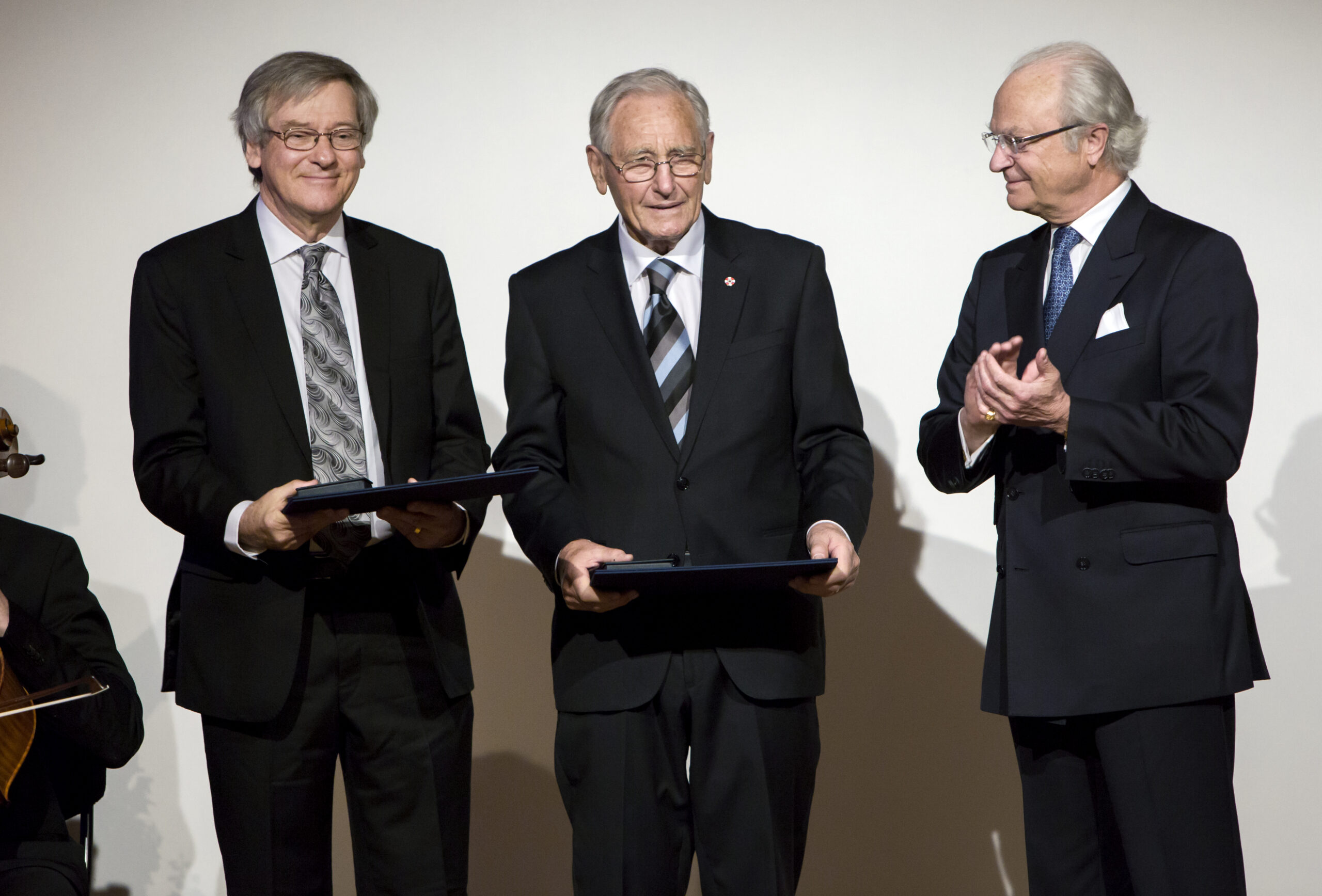The Royal Swedish Academy of Sciences has decided to award the Crafoord Prize in Mathematics 2016 to Yakov Eliashberg, Stanford University, Stanford, California, USA, “for the development of contact and symplectic topology and groundbreaking discoveries of rigidity and flexibility phenomena” and the Crafoord Prize in Astronomy 2016 to Roy Kerr, University of Canterbury, Christchurch, New Zealand, and Roger Blandford, Stanford University, CA, USA, “for fundamental work concerning rotating black holes and their astrophysical consequences”.
The Crafoord Prize in Mathematics
Yakov Eliashberg is one of the leading mathematicians of our time. For more than thirty years he has helped to shape and research a field of mathematics known as symplectic geometry, and one of its branches in particular – symplectic topology.
Yakov Eliashberg has solved many of the most important problems in the field and found new and surprising results. He has further developed the techniques he used in contact geometry, a twin theory to symplectic geometry. While symplectic geometry deals with spaces with two, four, or other even dimensions, contact theory describes spaces with odd dimensions. Both theories are closely related to current developments in modern physics, such as string theory and quantum field theory.
Symplectic geometry’s link to physics has old roots. For example, it describes the geometry of a space in a mechanical system, the space phase. For a moving object, its trajectory is determined each moment by its position and velocity. Together, they determine a surface element that is the basic structure of symplectic geometry. The geometry describes the directions in which the system can develop; it describes movement. Physics becomes geometry.
One of Yakov Eliashberg’s first and perhaps most surprising results was the discovery that there are regions where symplectic geometry is rigid and other regions where it is completely flexible. But where the boundary is between the flexible and the rigid regions, and how it can be described mathematically, is still a question that is awaiting an answer.
Yakov Eliashberg, born 1946 in S:t Petersburg, Russia. Ph.D. at Leningrad State University 1972. Herald L. and Caroline L. Ritch Professor of mathematics at Stanford University, CA, USA.
The Crafoord Prize in Astronomy
Black holes are the source of the universe’s most powerful radiation, as well as of jets that can stretch many thousands of light years out into space. Roger Blandford’s theoretical work deals with the violent processes behind these phenomena. Roy Kerr laid the foundation for this research early on, when he discovered a mathematical description of rotating black holes. This became one of the most important theoretical discoveries in modern cosmology.
The prediction of black holes is one of the perhaps strangest results of the general theory of relativity. When Albert Einstein finally presented his theory, in November 1915, he described gravity as a geometric property of space and time, spacetime. All objects with mass bend spacetime; they create a pit into which smaller objects can fall. The greater the mass, the deeper the pit. The mass of a black hole is so great that nothing that ends up in there can escape, not even light.
It was not until 1963 that mathematician Roy Kerr succeeded in solving Einstein’s equations for rotating black holes. That the holes should rotate is feasible because the stars from which they originated should have rotated. At about the same time, astronomers discovered galaxies that emitted light and other electromagnetic radiation that was so strong it outshone several hundred ordinary galaxies. They were named quasars. Nothing other than a black hole could give the quasars their luminosity.
So how is the strong light of rotating black holes created? This question was answered by Roger Blandford and his colleagues in the 1970s. Ever since, he has refined and made more realistic models of how gas surrounding a black hole flows towards it, is heated up and transforms some of its gravitational energy to radiation. While this is happening, electrically charged particles are sent millions of kilometres into space in the form of powerful jets. The source of all of this power is the rotational energy of the massive black hole.
Roy Kerr, born 1934 in Kurow, New Zeeland. Ph.D. 1959 at University of Cambridge, UK. Emeritus Professor at University of Canterbury, New Zeeland.
Roger Blandford, born 1949 in Grantham, UK. Ph.D. 1974 at University of Cambridge, UK. Luke Blossom Professor in the School of Humanities and Sciences, Stanford University, CA, USA.
Prize amount: 6 million Swedish krona per prize. The Crafoord Prize in Astronomy is shared equally between the Laureates.
Prize award ceremony is to be held at the Royal Swedish Academy of Sciences on 26 May 2015, in the presence of H.M. the King of Sweden.
Crafoord Days 24–26 may 2016 in Stockholm and Lund
Prize Lecture, Tuesday 24 May, Lund University, Lund.
Prize symposium, Wednesday 25 May, Stockholm.
Prize ceremony, Thursday 26 May, Beijer hall, the Royal Swedish Academy of Sciences, Stockholm.

